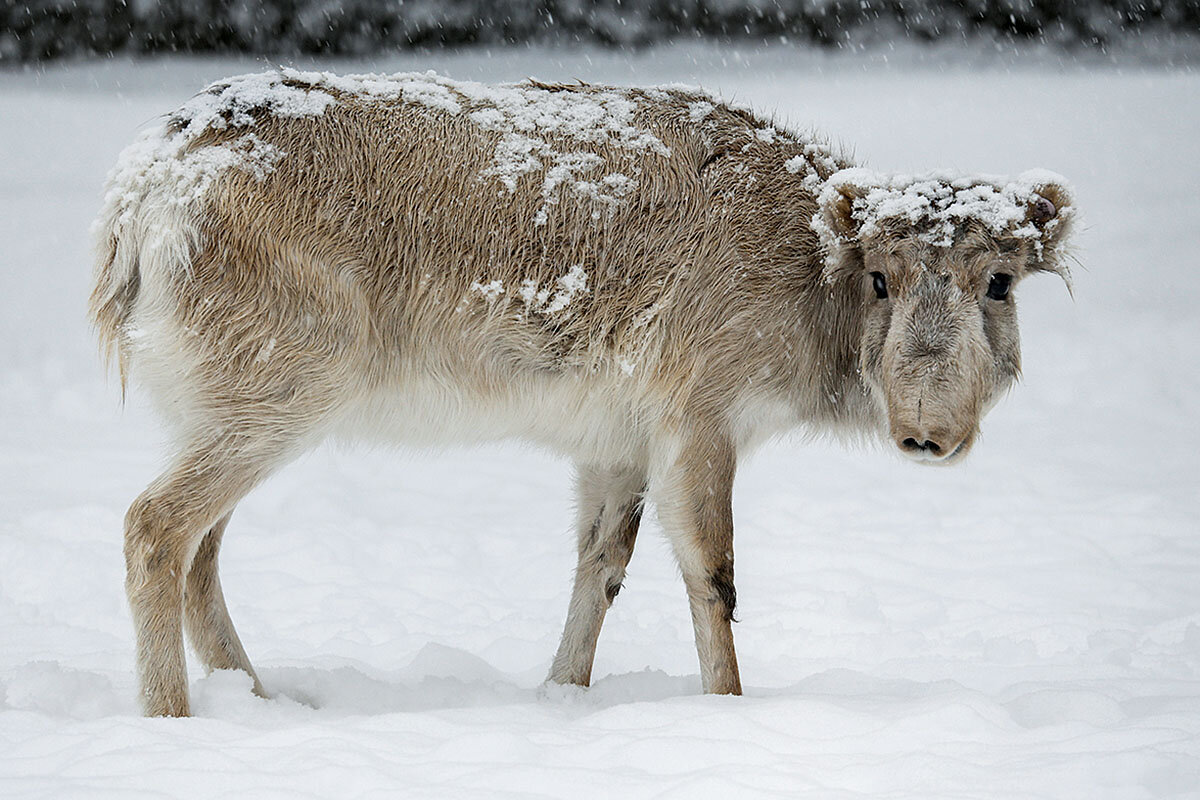Bridges from old wind turbines, better A/C from nonstick coatings
Loading...
In two of our science briefs, new ideas try to solve problems that themselves were meant to be solutions: Both wind power and air conditioning have environmental side impacts.
1. United States
A Northeastern University professor has developed a paper-based material that can sustainably cool buildings, offering a potential alternative to traditional air conditioning. Most homes in the U.S. use air conditioning appliances, which demand a lot of electricity and cost an annual $29 billion to operate. They also release an estimated 117 million tons of carbon dioxide each year. Engineering professor Yi Zheng, whose research focuses on nanomaterials, may have found a solution.
Why We Wrote This
This week in our progress roundup, engineers are addressing two environmental concerns that are mere decades old: the climate impact of air conditioning and aging wind turbine blades.
The recyclable “cooling paper” – a combination of common paper fibers and polytetrafluoroethylene (known as Teflon) – can reflect heat off a building’s rooftop and even absorb and emit excess heat from within, bringing down a room’s temperature by 10 degrees Fahrenheit. This method of temperature control uses nanoscale radiative heat transfer, and is part of a budding effort to apply nanotechnology to global challenges such as climate change. “What I’m doing is just a small piece of the puzzle,” says Dr. Zheng, who received a National Science Foundation grant to develop the field of nanoscale energy conversion and cooling. “I want to bring [people] into nanoengineering, where they can come up with their own solutions to these problems.”
The Hill, Northeastern University
2. Mexico
Women made historic gains in Mexico’s midterm elections, winning a record six state gubernatorial races. In the nearly 70 years since Mexican women won the right to vote, only nine have served as governor. Now, seven women will simultaneously be leading regional governments, including Mexico City’s. These offices hold a great deal of political influence and are seen as a steppingstone to the presidency.
This milestone is largely the result of 2019 “parity in everything” constitutional reform, which expanded gender quotas and required political parties to nominate a minimum of seven female candidates for the 15 gubernatorial offices available in the 2021 midterms. Five of the six winners are members of the ruling Morena party. Although most parties nominated women in smaller, less populated states, the combined victories in Baja California, Chihuahua, Guerrero, Colima, Tlaxcala, and Campeche are expected to give women an unprecedented platform in Mexican politics.
Reuters, The Washington Post, Explica.co
3. Argentina
Congress gave final approval for a law reserving 1% of the nation’s public sector jobs for transgender people, a move advocates say could be transformative. A community accustomed to discrimination and violence, trans people had a life expectancy in Argentina of just 32 years, and only 9% had formal jobs, according to a 2017 study by the Buenos Aires government. Lawmakers overwhelmingly voted in favor of the quota, which not only ensures that trans people are represented at state-run hospitals, banks, and companies, but also offers tax incentives for private businesses that hire trans candidates. The legislation targets two major hurdles for this high-risk community: poverty and education.
Other countries, including Uruguay, Bangladesh, and Brazil, have introduced or proposed similar legislation. “This law will change our lives,” said Claudia Vasquez Haro from the Argentine Federal Transgender Convocation. “For us, having a formal job implies being able to study and to rent a place to live.”
Thomson Reuters Foundation
4. Ireland, Northern Ireland, and United States
Re-Wind, a collaboration among researchers in the U.S., Ireland, and Northern Ireland, is figuring out how to repurpose old wind turbines for civil engineering projects. Its work is part of a larger push to address the growing problem of turbine waste as machines are upgraded or reach the end of a typical 20-year lifespan. More than 11,000 tons of blades are expected to be decommissioned in Ireland alone by 2025. These massive, hollow blades – often made with thermoset resin, a tough plastic cured at extremely high heat – are difficult to break down, let alone recycle.
But their strength and size could also be an asset, potentially replacing steel girders in some construction projects. The Re-Wind team from the University College Cork is using three 40-foot blades from a wind farm in Belfast to create part of a pedestrian greenway. In Kansas, researchers are looking into ways to convert old blades into electrical transmission poles. Other ideas the collaborative group plans to test include skate parks and erosion-fighting coastal barriers.
EuroNews, Grist, Yale Climate Connections
5. Guinea
The World Health Organization (WHO) has declared an end to Guinea’s second Ebola outbreak since 2014 following a rapid response from local and international health authorities. Officials say they relied on lessons learned from past outbreaks in the region, including the 2014-16 West Africa Ebola epidemic, which began in Guinea and spread to other countries.
Community engagement in public health measures and quick, equitable distribution of thousands of vaccines were key to fighting the recent outbreak, reported WHO chief Tedros Adhanom Ghebreyesus. The first cases were confirmed in February, and the last patient was treated in May. Authorities then waited the mandated 42 days to see if new cases emerged before declaring the outbreak over.
“Thanks to new innovations and lessons learned, Guinea managed to contain the virus in four months,” said WHO regional director Matshidiso Moeti. “We are getting faster, better, and smarter at fighting Ebola.”
Reuters, Agence France-Presse, Centers for Disease Control and Prevention
6. Kazakhstan
Kazakhstan’s population of critically endangered saiga antelopes has more than doubled since the last aerial survey in 2019, offering hope for the species’ survival. The number of saiga antelopes, a steppe-dwelling creature known for its bulbous snout, rose from 334,000 to 842,000, according to the April survey. This comes after infection wiped out more than half of the global saiga population in 2015. For decades, the antelopes have been under continued pressure from climate change, human development in the flatlands, and poaching for their horns, which can earn up to $5,000 on the black market.
Researchers say the rebound is partly due to the government’s crackdown on poaching, as evidenced by the improving ratio of male to female antelopes, and other conservation efforts. The ecology ministry has also announced the establishment of a 1.6 million-acre nature reserve in western Kazakhstan to facilitate saiga migration.
France 24, The Astana Times








